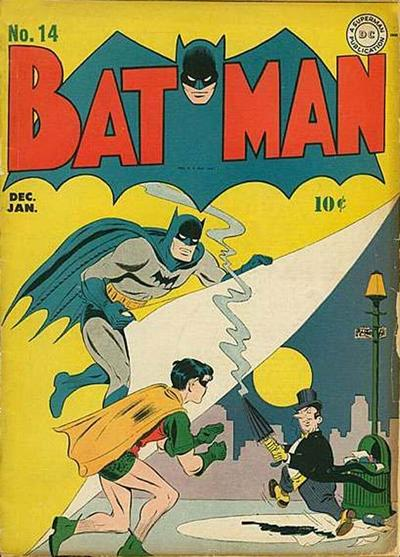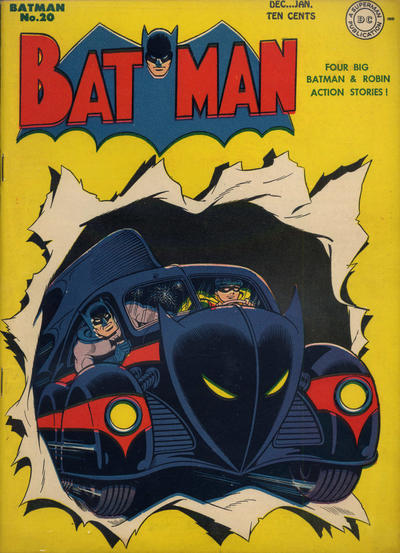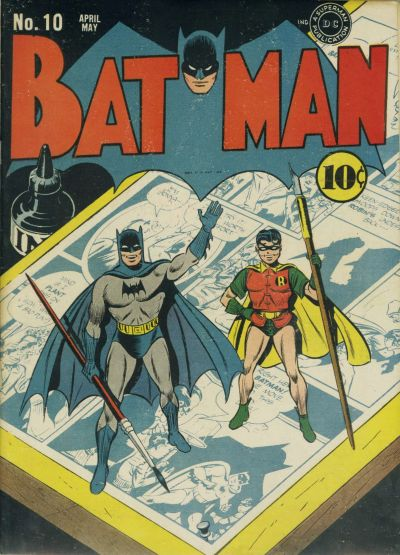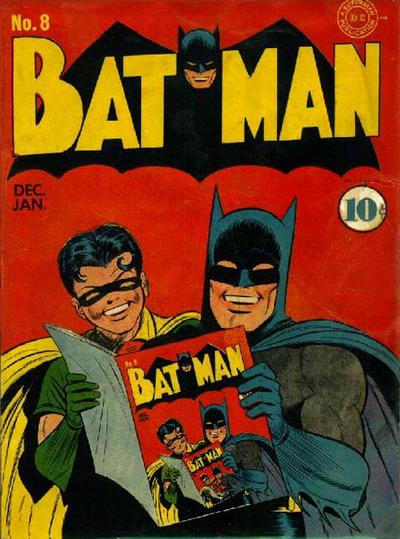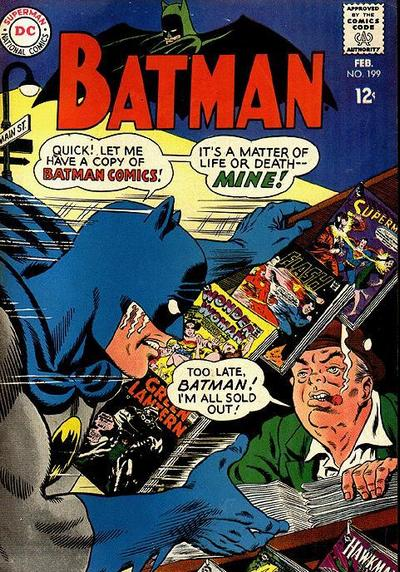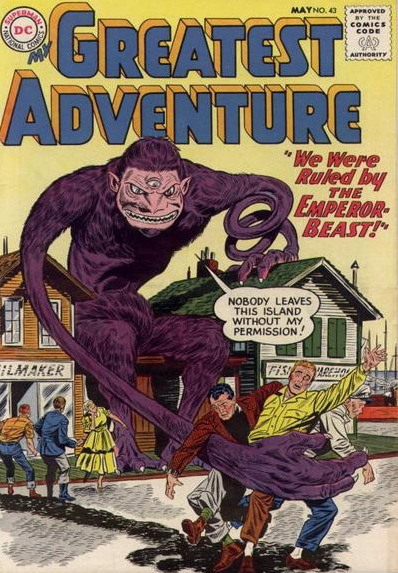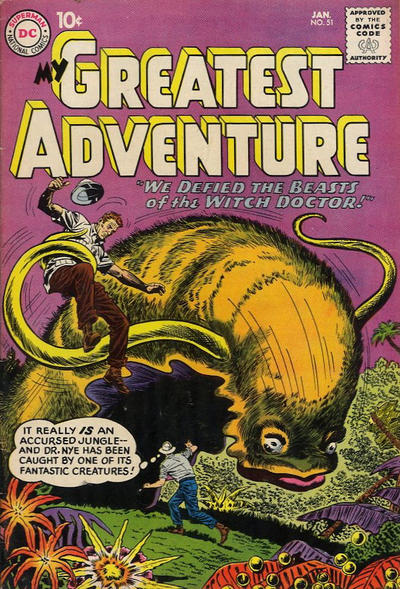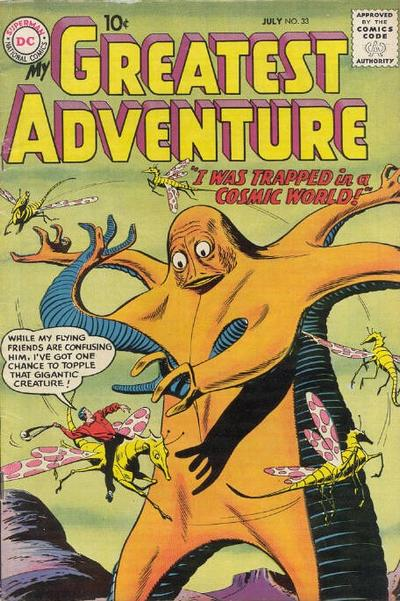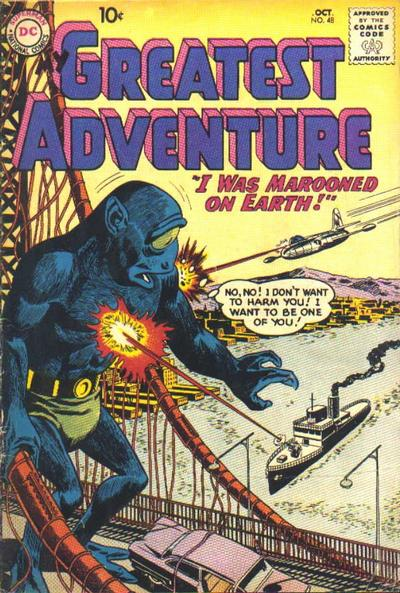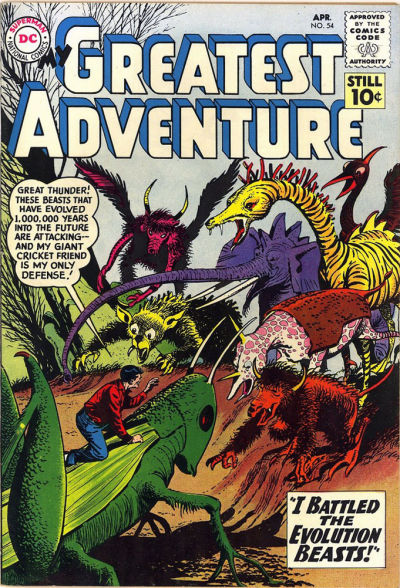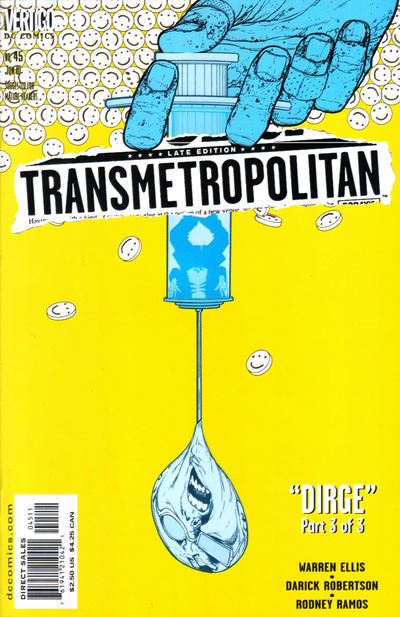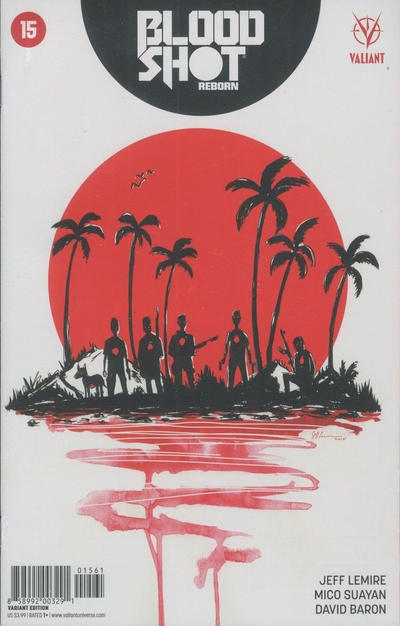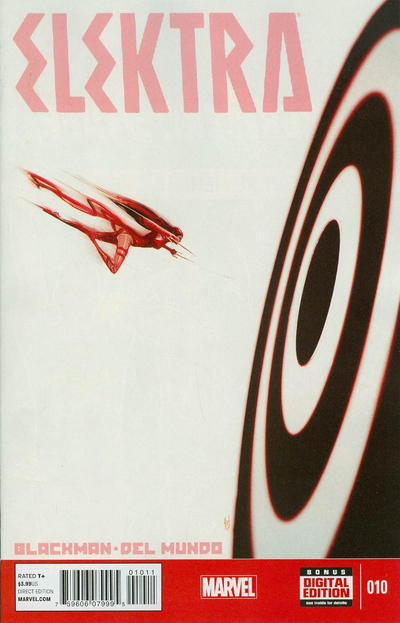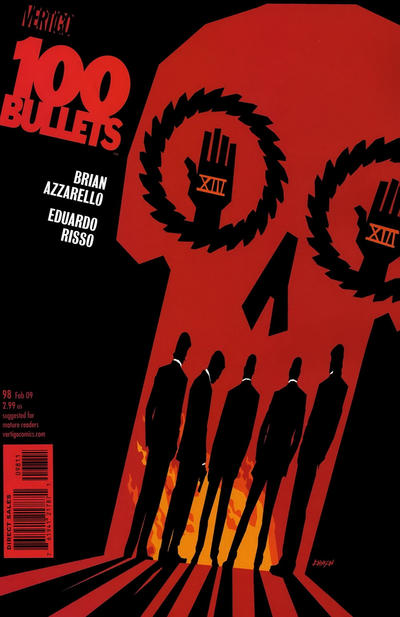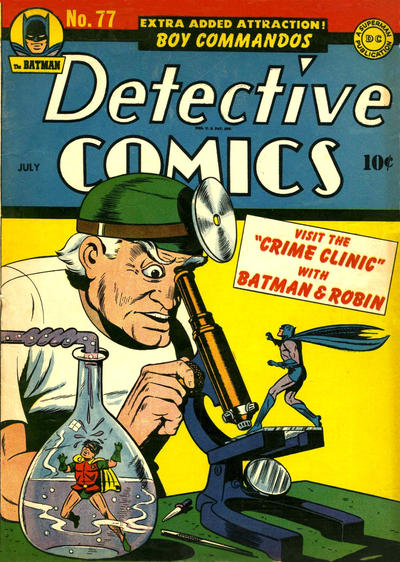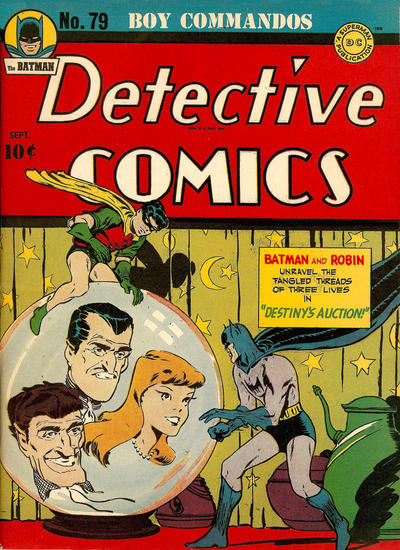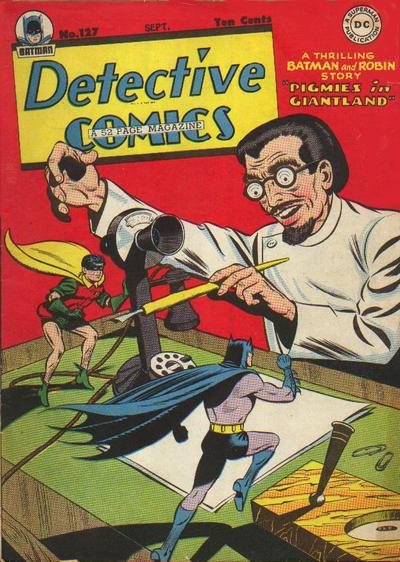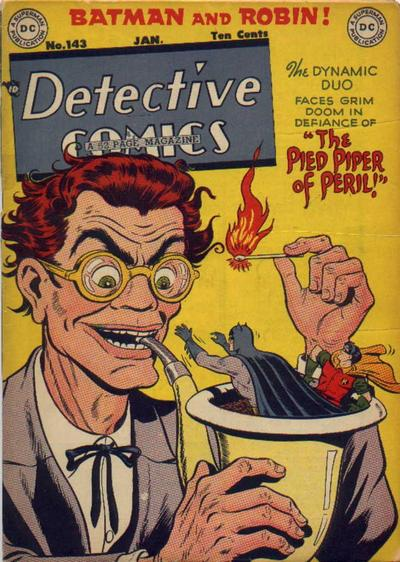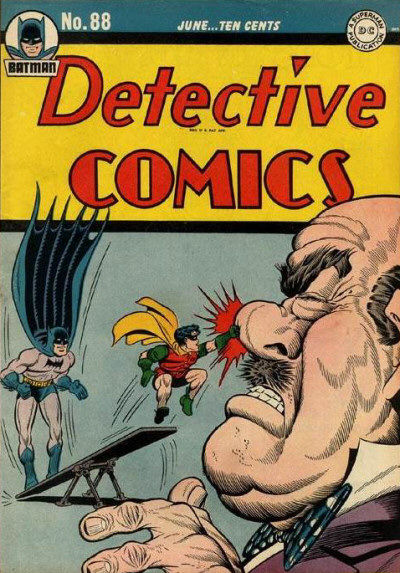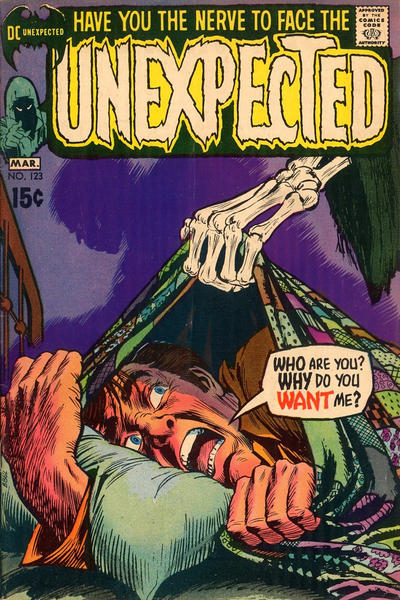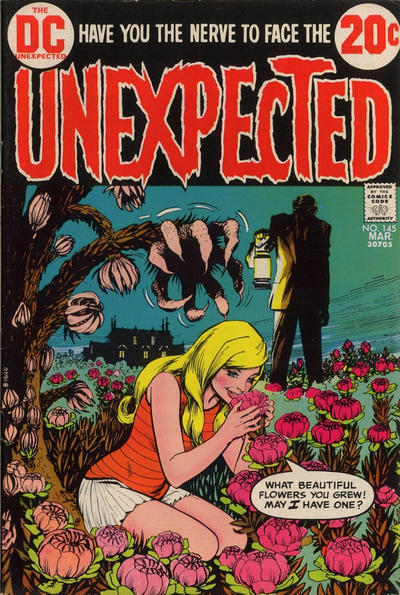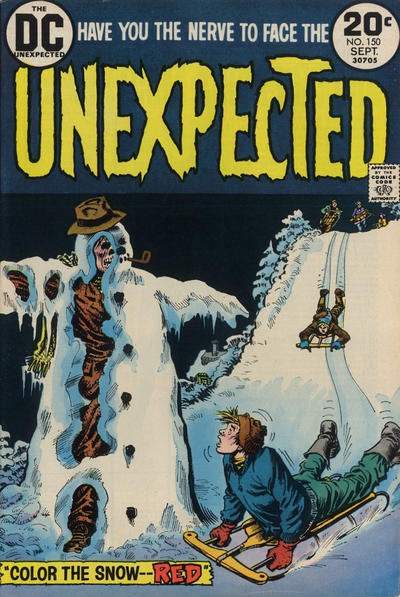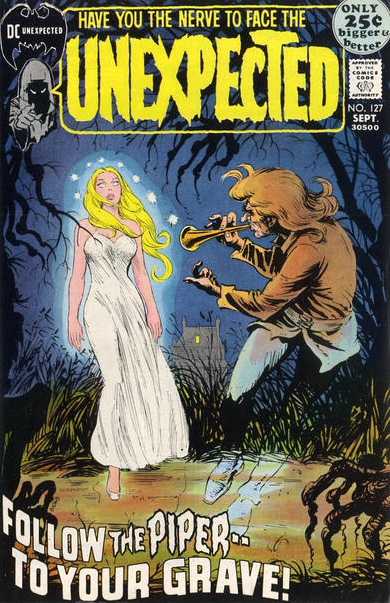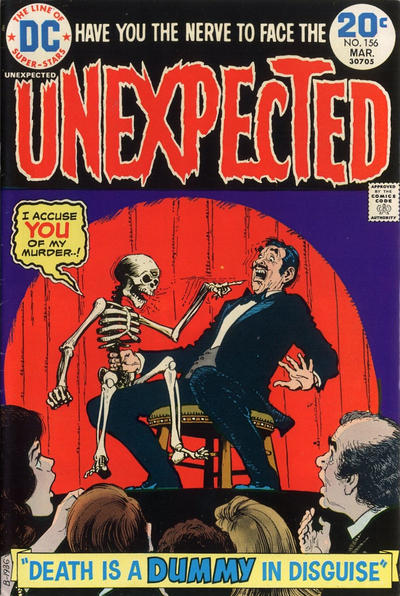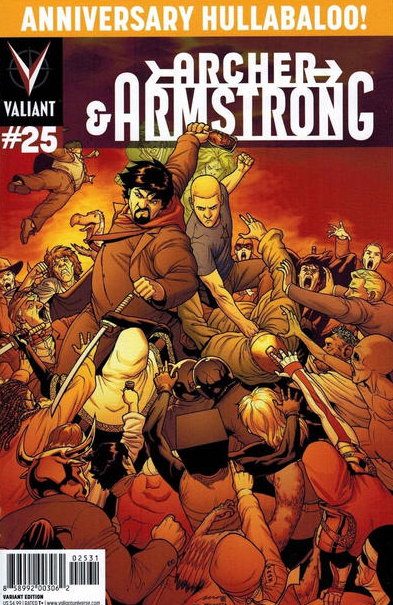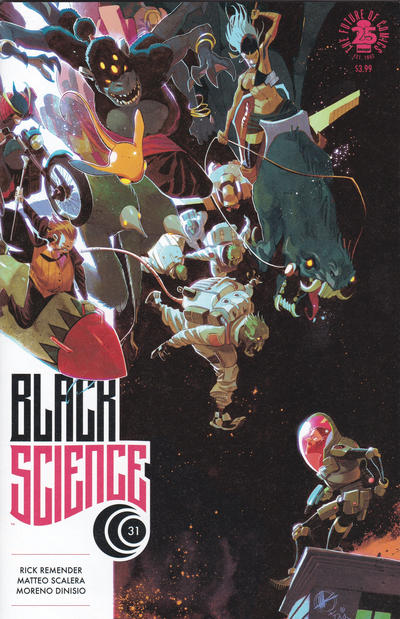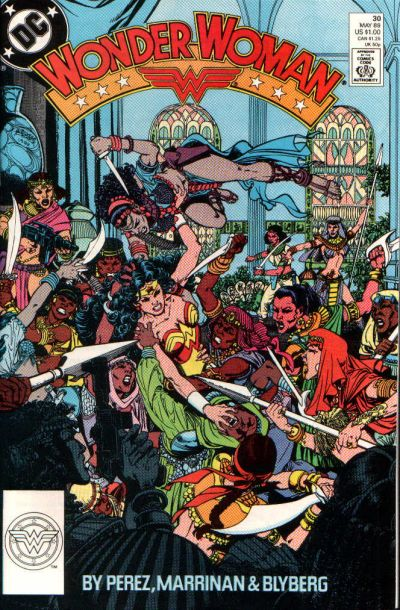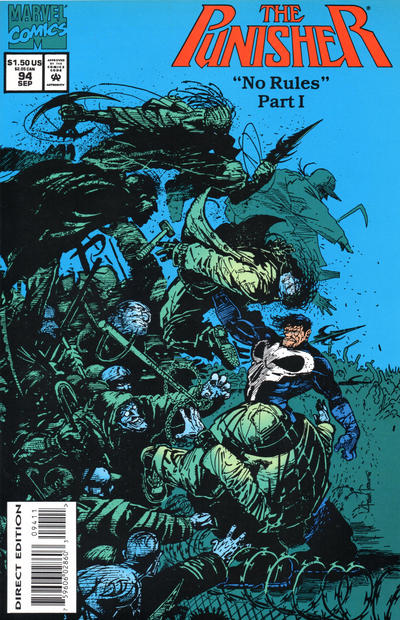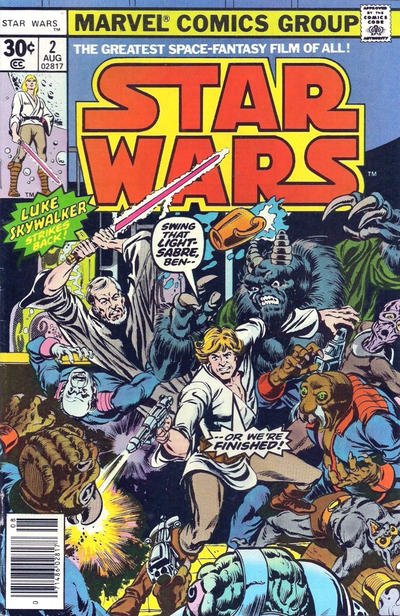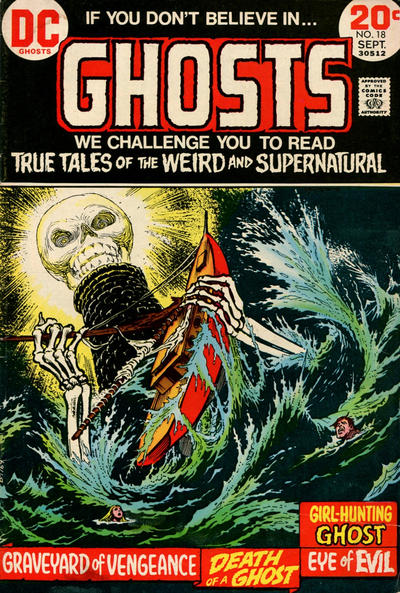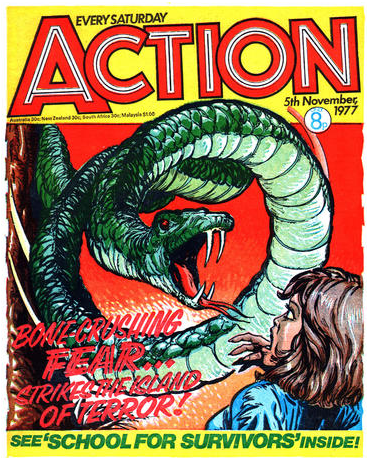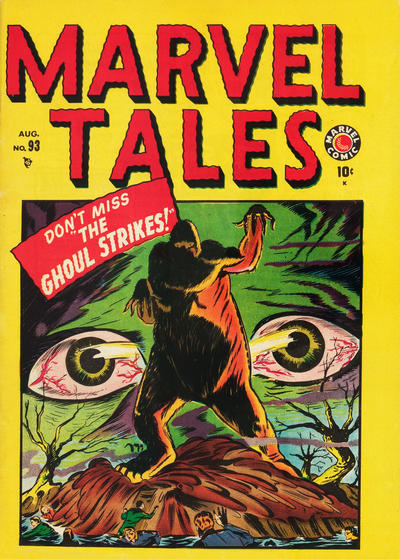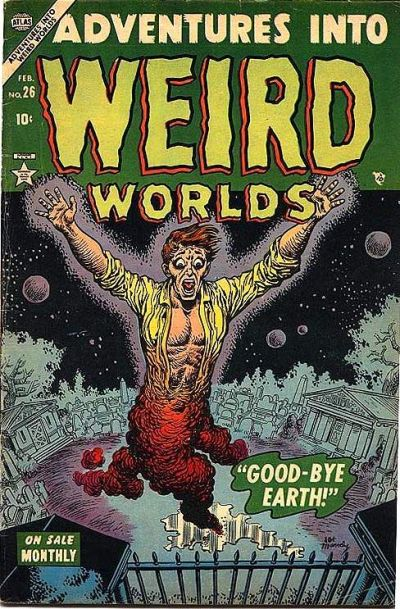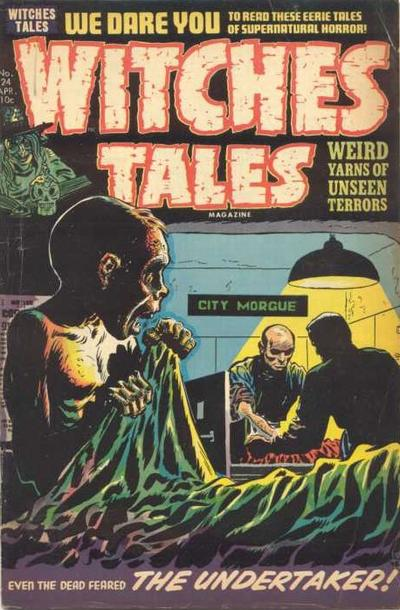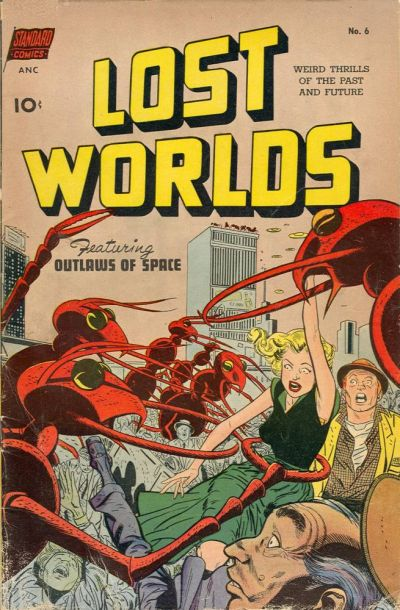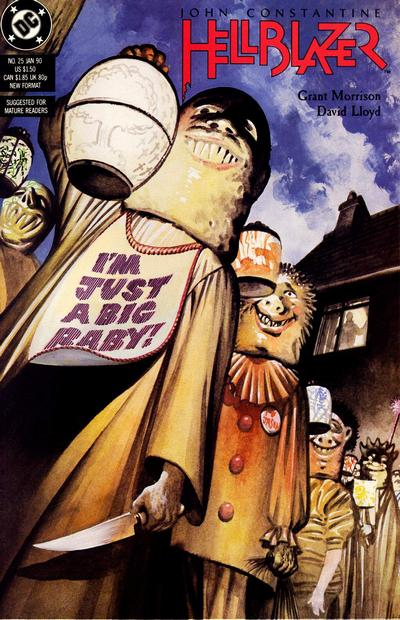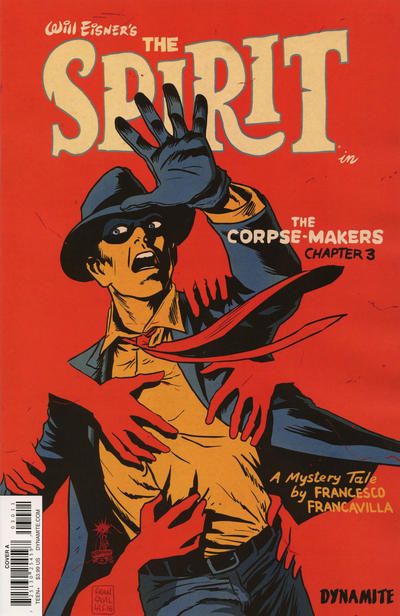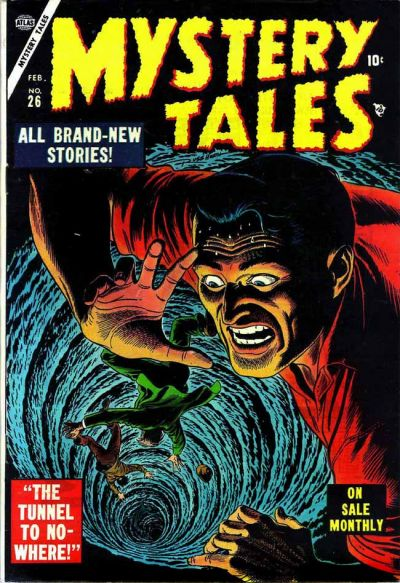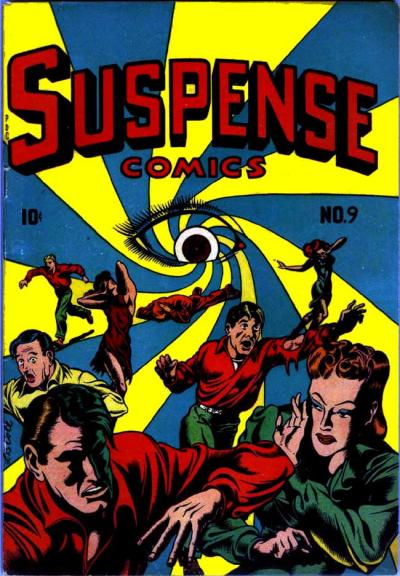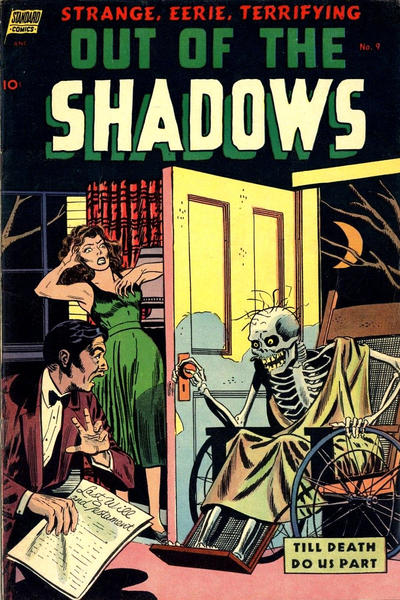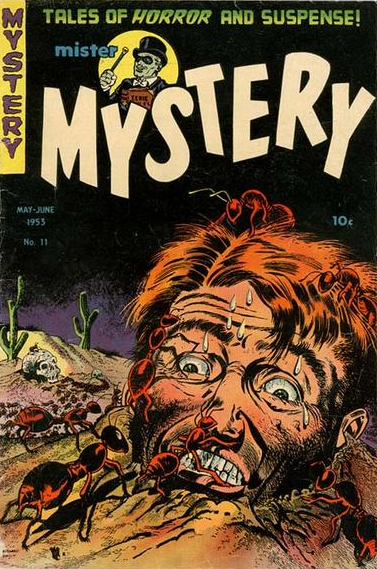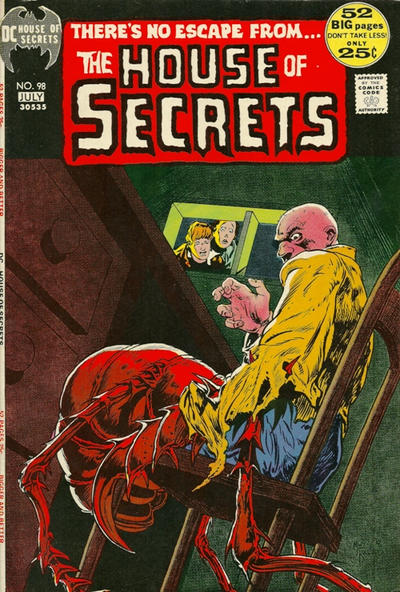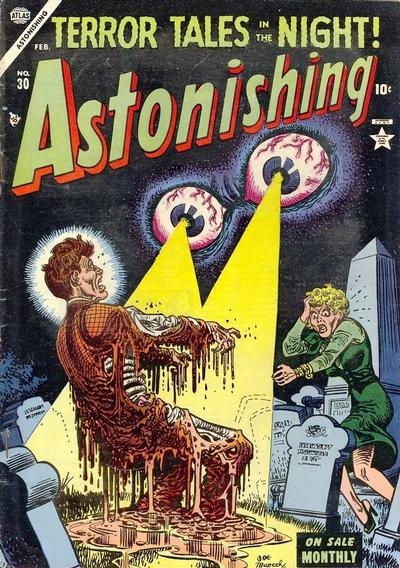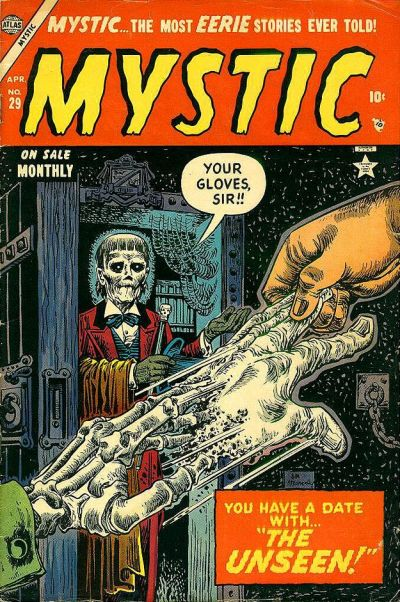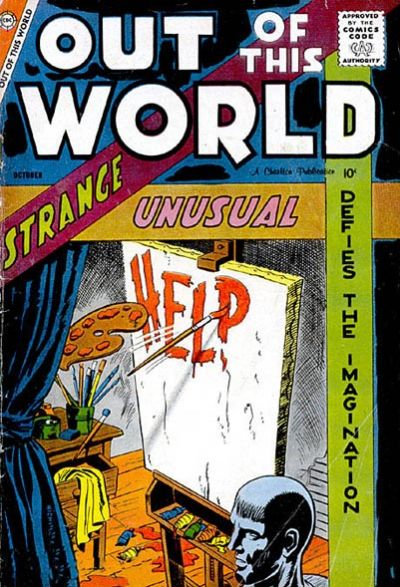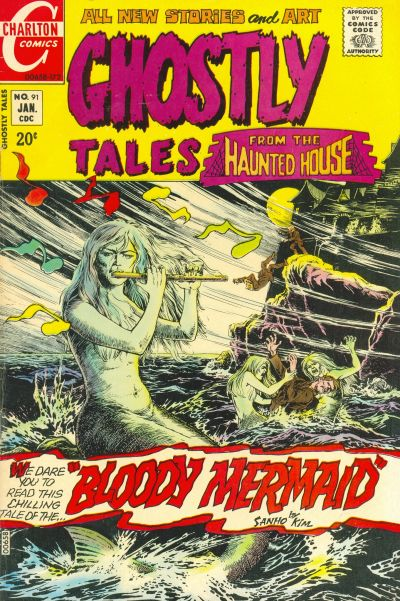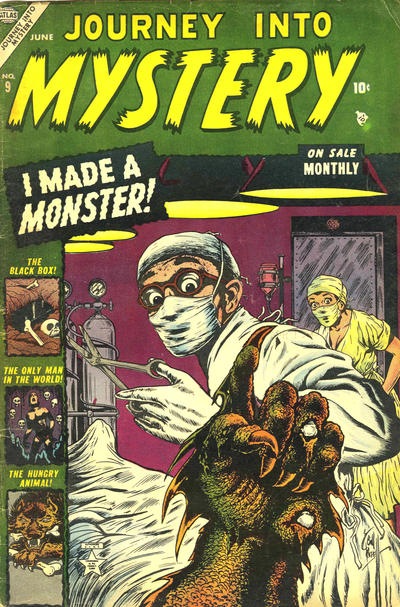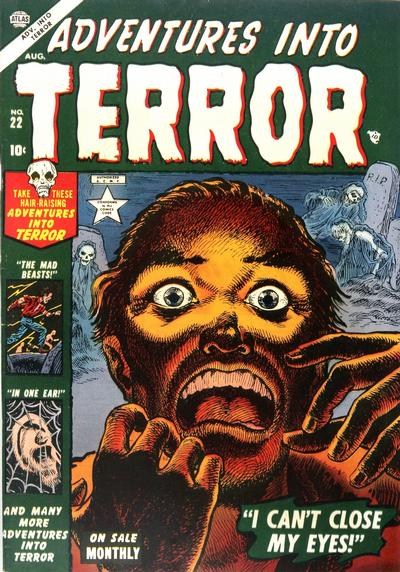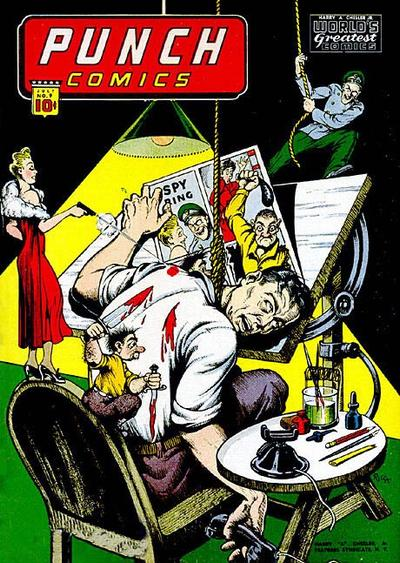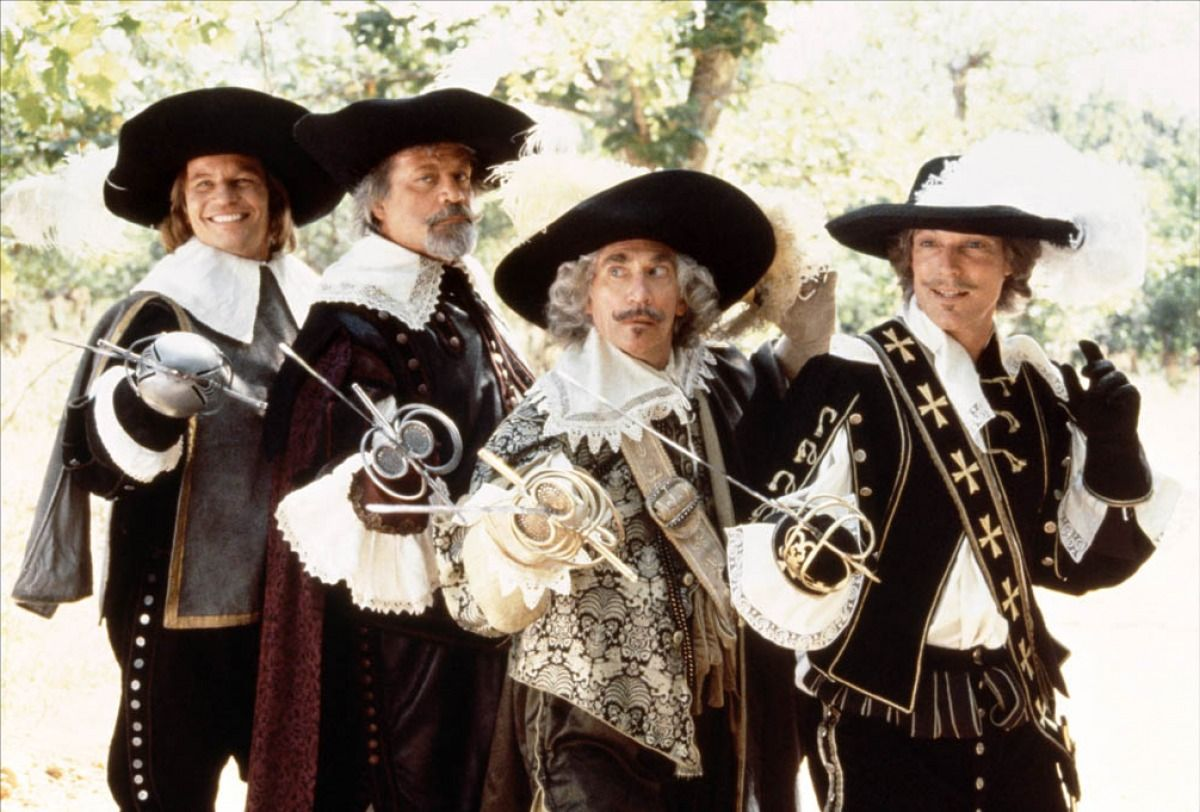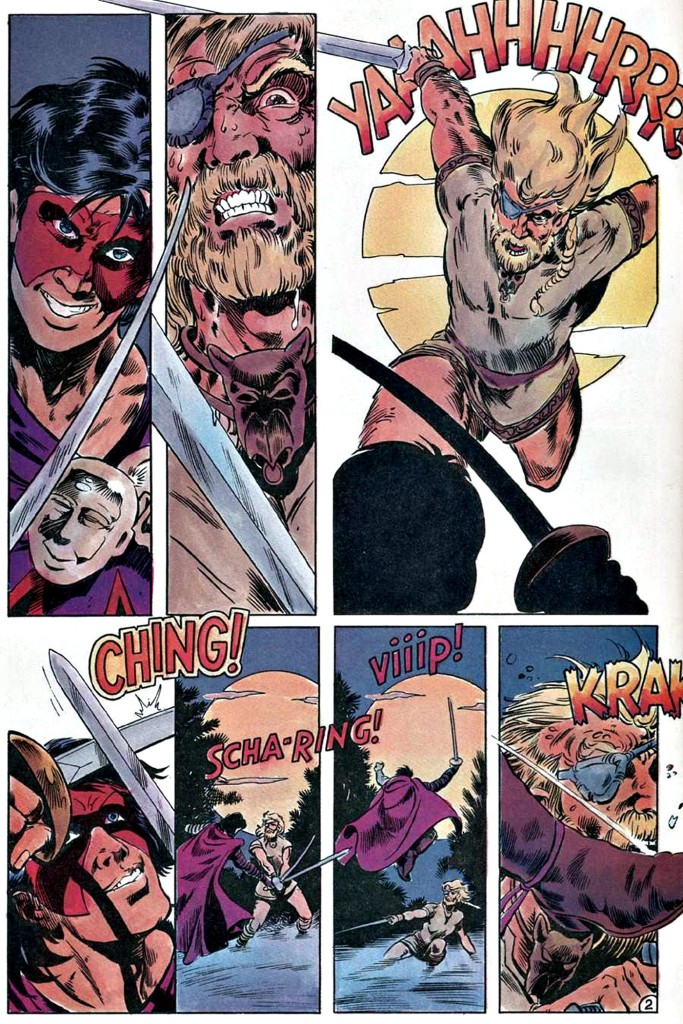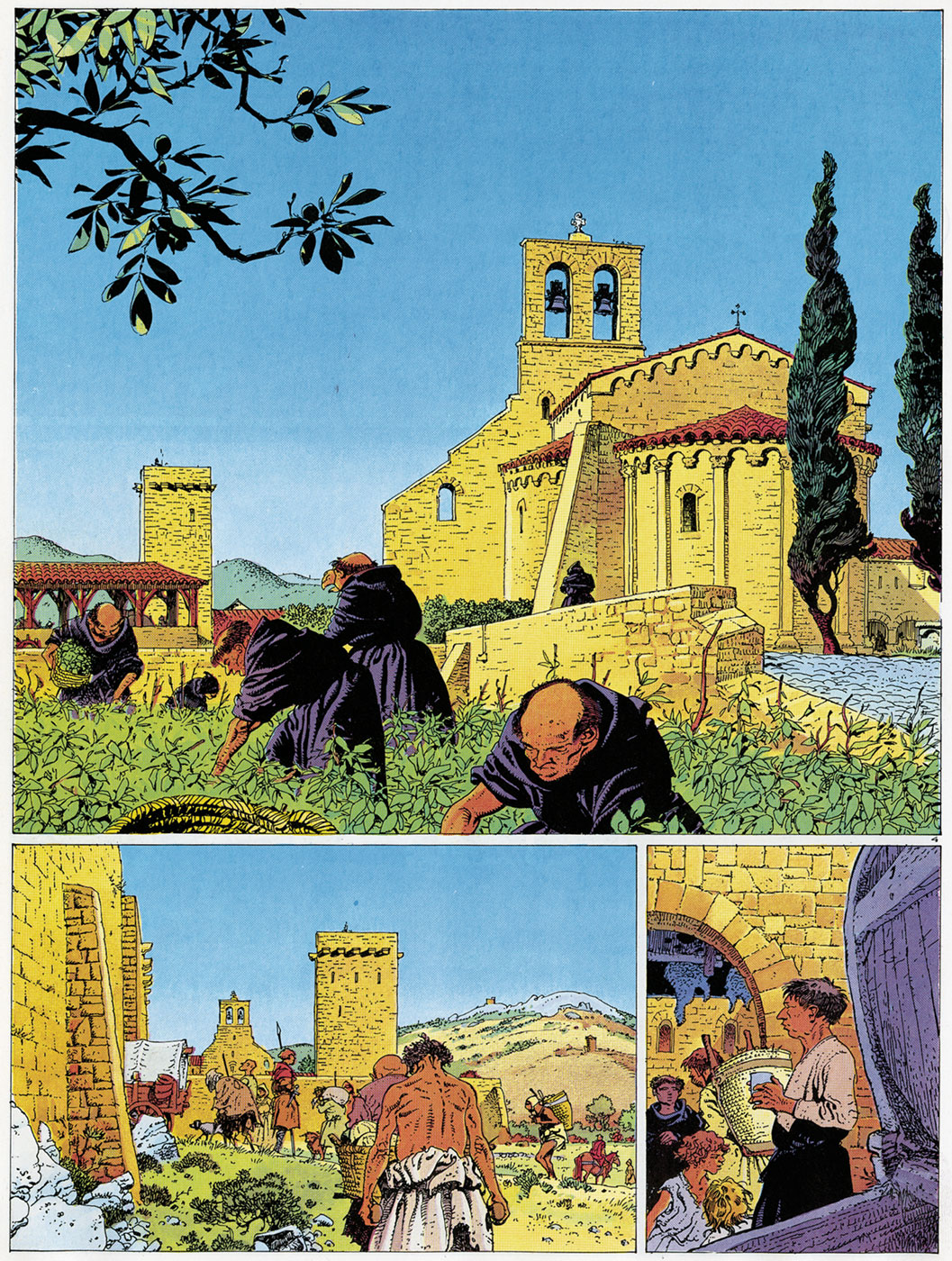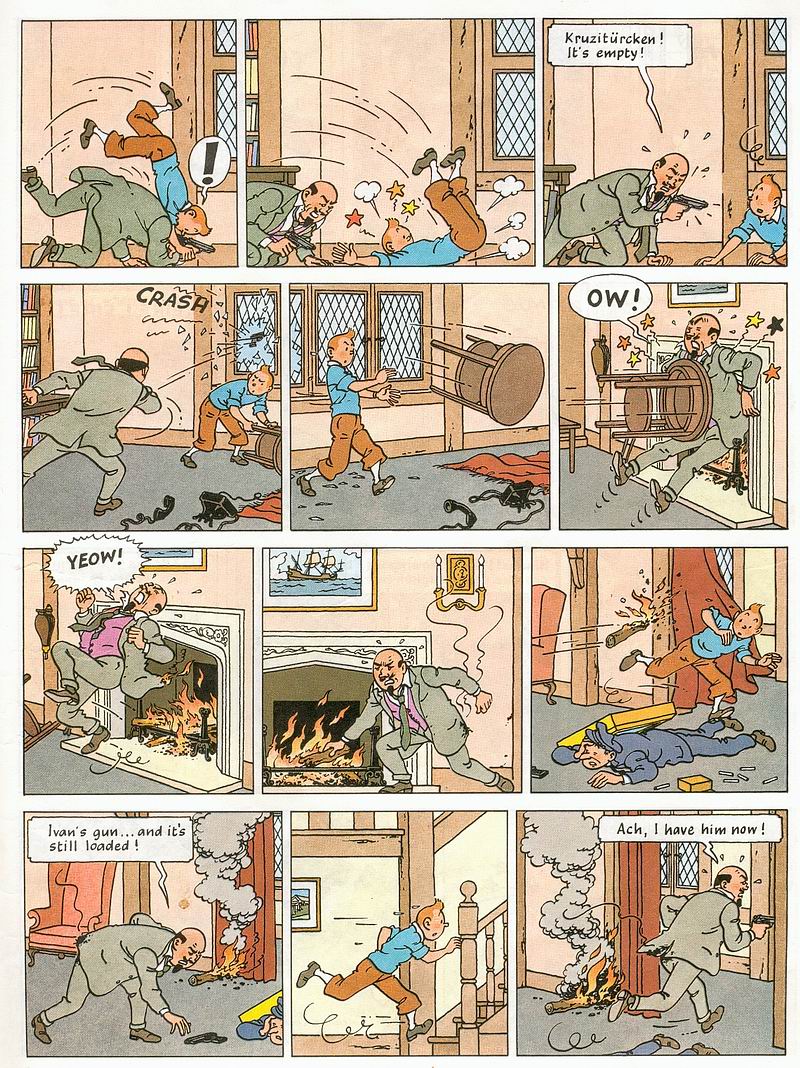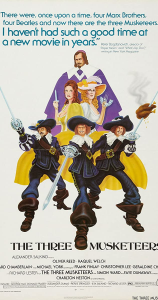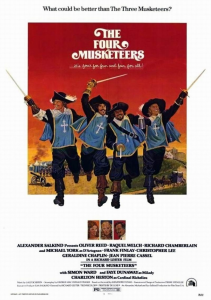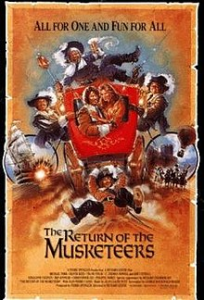Last year I celebrated Halloween by posting about ten brilliant horror comic book short stories. I could easily fill another post with ten gems – after all, cool horror anthologies are a dime a dozen in this medium…
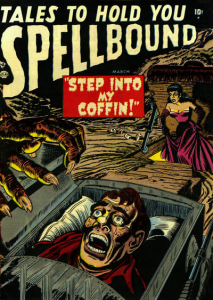
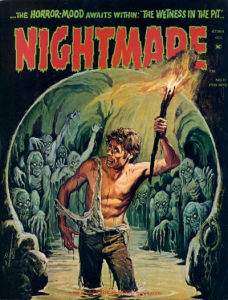
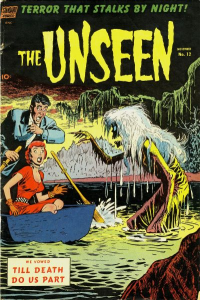
However, this time around I’m doing something for the hardcore fans of the genre – those who can have a good time not just with masterpieces, but also with less polished works, disregarding obvious shortcomings in the name of appreciating their best beats.
For people like us, there is more than enough room for uneven, unpretentious comics like the thirteen tales below, as long as they have at least one neat redeeming feature… Hell, in some cases the schlockier bits can actually come across as somewhat charming or as even more unsettling because of their discordant notes. Plus, once you put the medium’s greatest artists on the job, there is always something to appreciate on the page, at least from a visual standpoint!
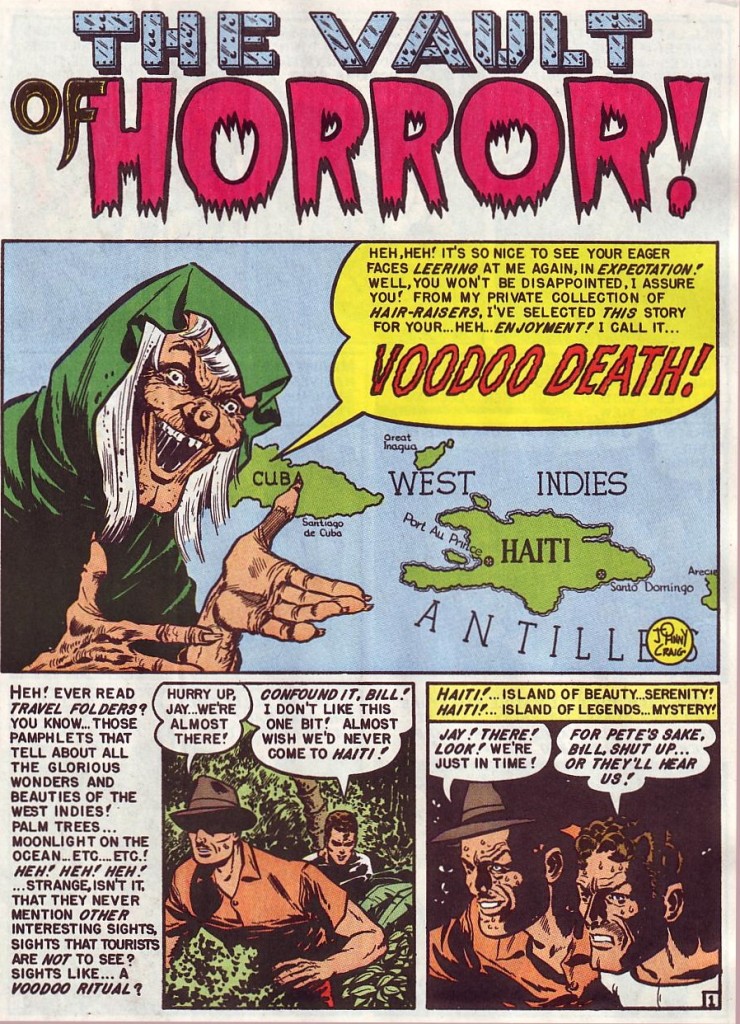
‘Voodoo Death!’ (originally published in Tales from the Crypt #23, cover-dated April-May 1951), by Johnny Craig (script, art), Marie Severin (colors), Jim Wroten (letters)
Yes, the Vault-Keeper’s narration can be groan-inducing for those who are not in the right mood, especially the closing puns. Yes, exotic tribes and voodoo rituals are tropes that associate non-white cultures with violence and irrationality (in contrast to the colonizers’ ‘civilization’). But if you’re willing to accept those campy, trashy elements, then ‘Voodoo Death!’ will reward you with a couple of thrills (impeccably rendered by Johnny Craig’s smooth, expressive style) and a genuinely surprising development… The thing is that voodoo and zombies were not as firmly codified in early fifties’ pop culture as they are today, so the story’s mythology actually comes across as quite baffling and original! Plus, I love the fact that, refreshingly, there is no clear moral to this horrorfest, just sheer sadism.
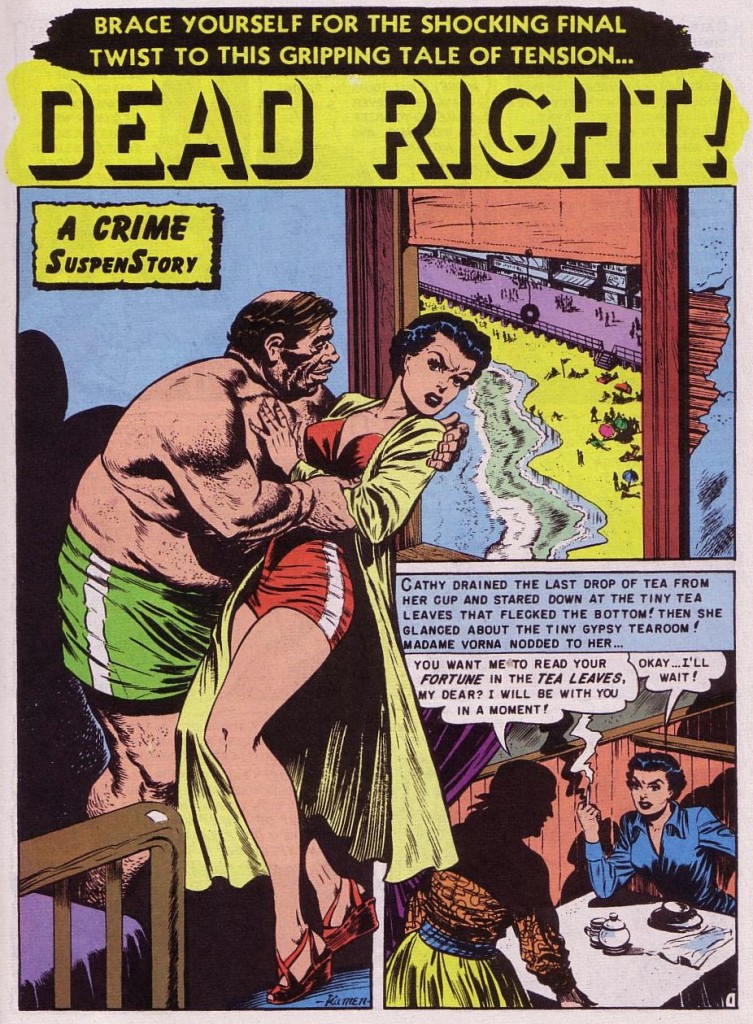
‘Dead Right!’ (originally published in Shock SuspenStories #6, cover-dated December 1952 – January 1953), by Bill Gaines (plot), Al Feldstein (plot, script), Jack Kamen (art), Marie Severin (colors), Jim Wroten (letters)
This one is worth it mostly for the ending, although the ride there isn’t a slog (even if it is pretty linear). Cathy, our lead, is such a gleefully superficial gold-digger that it’s fun to just watch her constantly fight against her instincts, as she dates the kind of man she would never accept if not for the hope of a financial payoff based on a fortune teller’s prediction. The main horror ultimately stems from having to put up with an undesired marriage in the name of subsistence! And although the old gypsy woman is a cringy stereotype, I give it a pass because she keeps screwing with her client’s head…
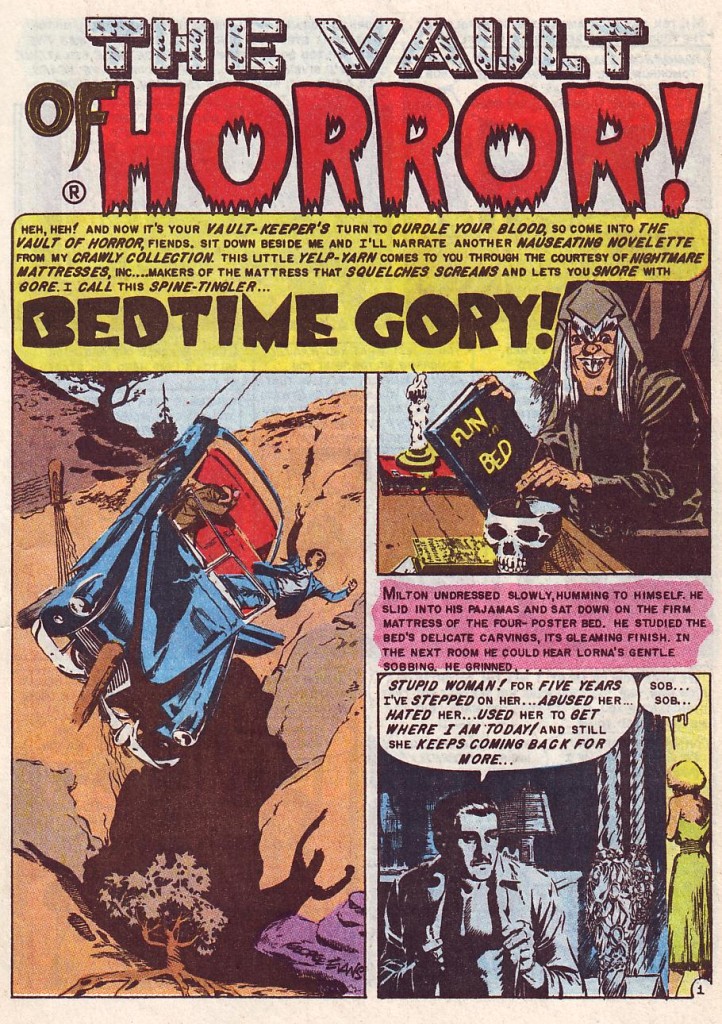
‘Bedtime Gory!’ (originally published in Haunt of Fear #18, cover-dated March – April 1953), by Al Feldstein (script), George Evans (art), Marie Severin (colors), Jim Wroten (letters)
Reversing the gender dynamics of ‘Dead Right!,’ this darkly comedic story features a truly despicable heel who also marries for money and we can’t wait to see him get his comeuppance. That said, his wife, Lorna, essentially steals the show, coming across as a much more nuanced and fascinating character, not least because of the ‘acting’ conveyed by George Evans’ artwork… You can argue there is too much set-up for such a simple punchline, but I think the result is gratifying enough. In any case, honestly, ‘Bedtime Gory!’ had me as soon as I first read the title!
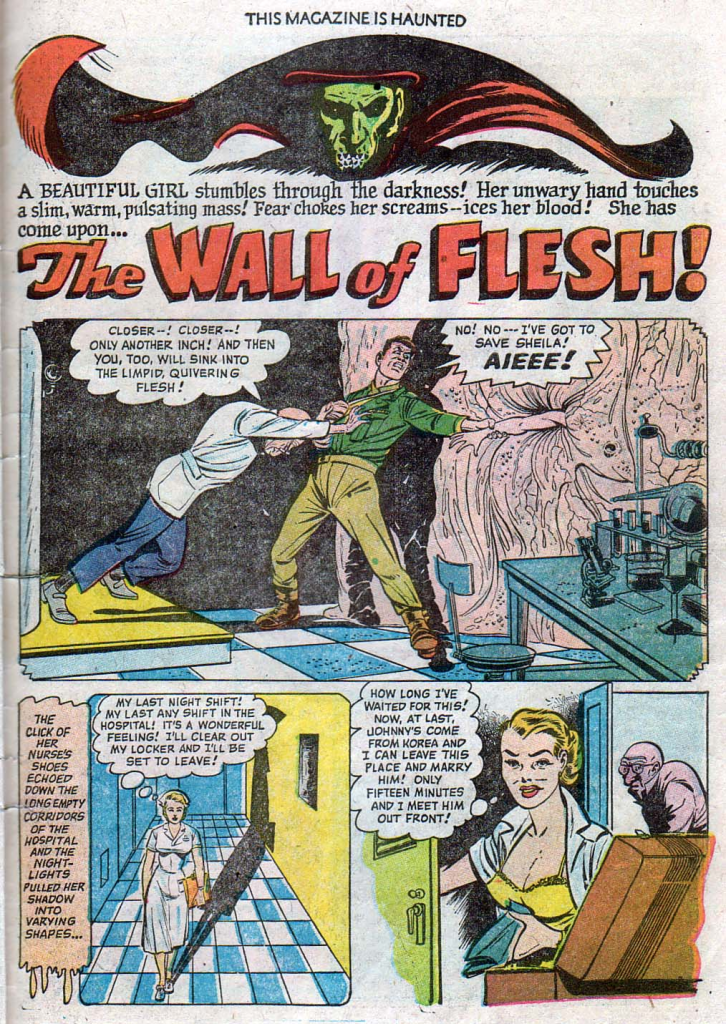
‘The Wall of Flesh!’ (originally published in This Magazine is Haunted #12, cover-dated August 1953), by Bob Powell (art), Ed Hamilton (letters)
The main allure of ‘The Wall of Flesh!’ is that it features, well, a wall made out of flesh… living, quivering, pulsating flesh that sucks people in! It may not sound like much, but it’s a memorable visual that more than justifies these nightmarish eight pages, especially given Bob Powell’s vivid, expressionistic illustrations (including a few striking panels signaling the passage of time by merging the victim’s painful absorption into images of an advancing clock). I don’t know who wrote this, but, even though the characters aren’t particularly developed, the decision of framing the story around a beautiful young woman’s rejection of an old mad scientist turned out to be quite inspired, since there is something disturbingly sexual about the whole wall of flesh imagery.
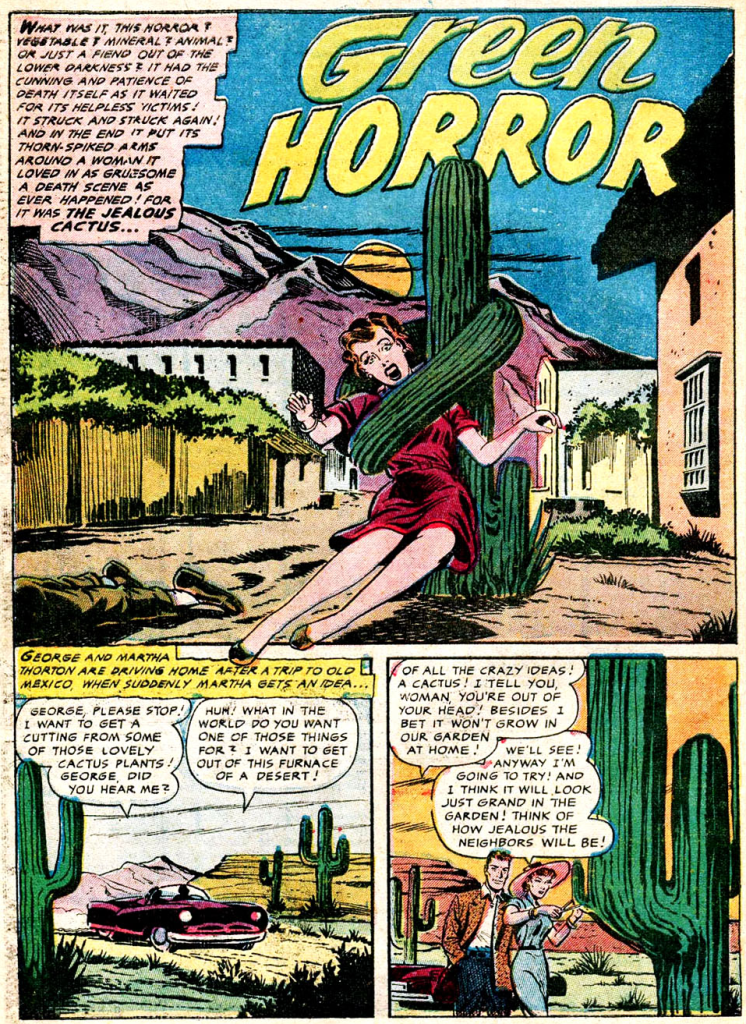
‘Green Horror’ (originally published in Fantastic Fears #8, cover-dated July–August 1954), by Ruth Roche (script) and Ken Battefield (art)
‘Green Horror’ tells us a story about a murdering jealous cactus. Yes, it’s silly and (intentionally) funny, but it’s also pretty creepy, as it is typically the case with tales about murder springing from unexpected places in the middle of a supposedly blissful suburbia. More than anything else, this comic is worth it for the awesome panel in which the cactus wields an axe while a man in a robe contorts his face like Edvard Munch’s Scream and yells: ‘It hates me! Aiiieee!’
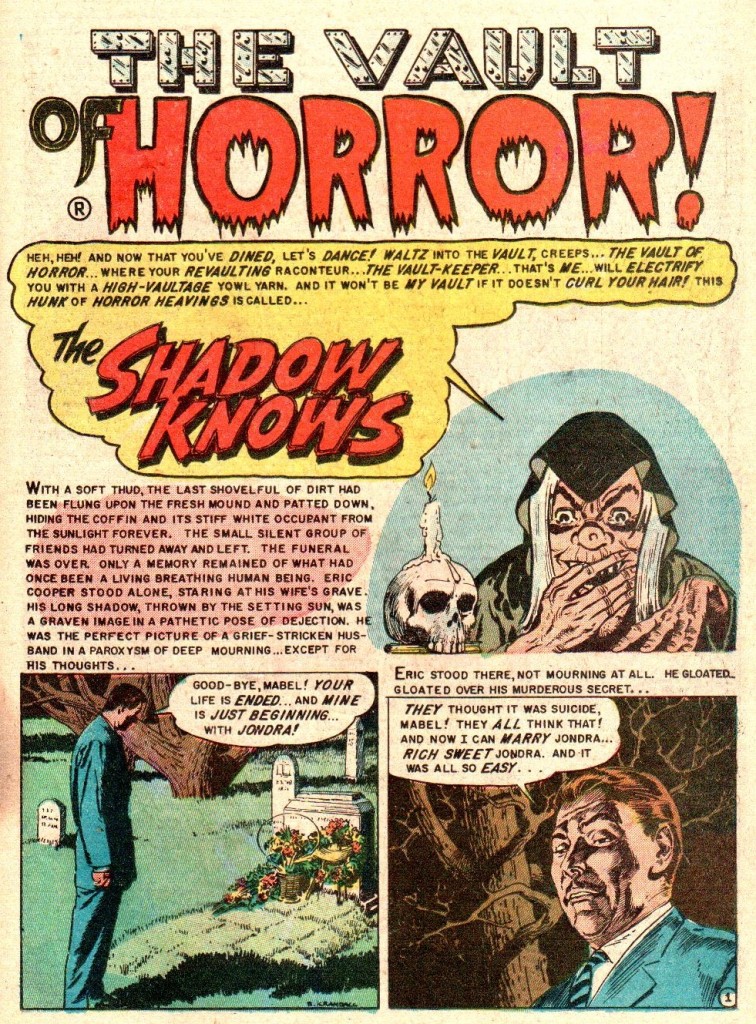
‘The Shadow Knows’ (originally published in Haunt of Fear #26, cover-dated July–August 1954), by Otto Binder (script), Reed Crandall (art), Marie Severin (colors), Jim Wroten (letters)
Another horrifying marriage story. The link between infidelity and murder lent itself to countless variations, exposing the dark undercurrent of bourgeois society – not just in comics, but also in twisted little films from this era that share EC Comics’ sensibilities, like Edward Dmytryk’s The Hidden Room (aka Obsession) or Hugo Haas’ Bait. In ‘The Shadow Knows’ (whose title plays on the catchphrase of the famous vigilante), we meet traveling salesman Eric Cooper, who bumps his wife to be with his latest lover, only to end up being haunted by the dead woman’s lingering shadow. It’s quite a text-heavy piece, but it has some inspired passages (‘Eric’s high-pressure sales technique had been as irresistible to himself as to others. He quickly sold himself on the idea…’). The core attraction, though, is Reed Crandall’s deadpan rendition of the bodiless shadow, eerie and allegorical, so it’s a shame the art ends up suffocated by so many captions and word balloons.
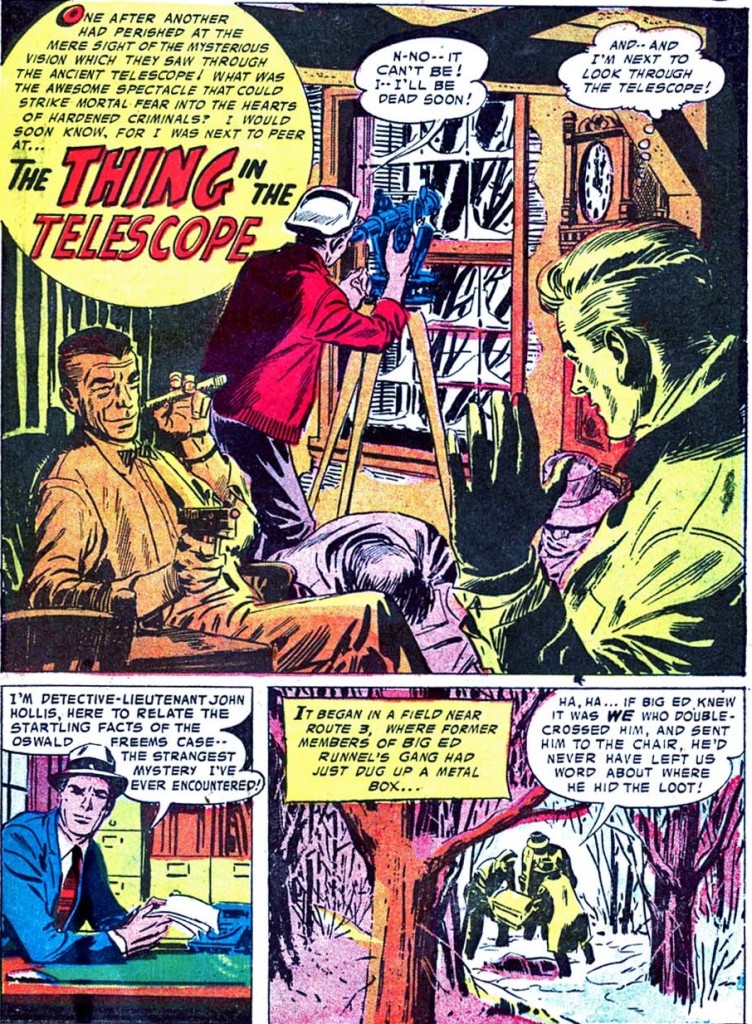
‘The Thing in the Telescope’ (originally published in House of Mystery #60, cover-dated March 1957), by Mort Meskin (pencils), George Roussos (inks)
I like this comic’s payoff so much that I cannot resist including it on the list, despite being the less accomplished of the lot… It’s a tight, simple script (again from an unknown writer) about a gang of criminals who come across an ancient telescope and everyone who looks through it gets sacred to death, with a clever O. Henry twist at the end (honestly, I’m not sure how original the twist is, since a variation of it had already appeared at least once, ten years earlier, in Detective Comics #130, but I still say it works quite well in this taut little chiller). I like Mort Meskin’s and George Roussos’ sharp art well enough – particularly the nifty choice of angles! – but there is an inexcusable mistake in their execution, as one panel on the fifth page contradicts the story’s resolution. (When the story was republished in 1972, in House of Mystery #198, the colorist clumsily tried to correct the mistake, but the palette on that version is so garish that you might as well track down the flawed original, which is much moodier.)
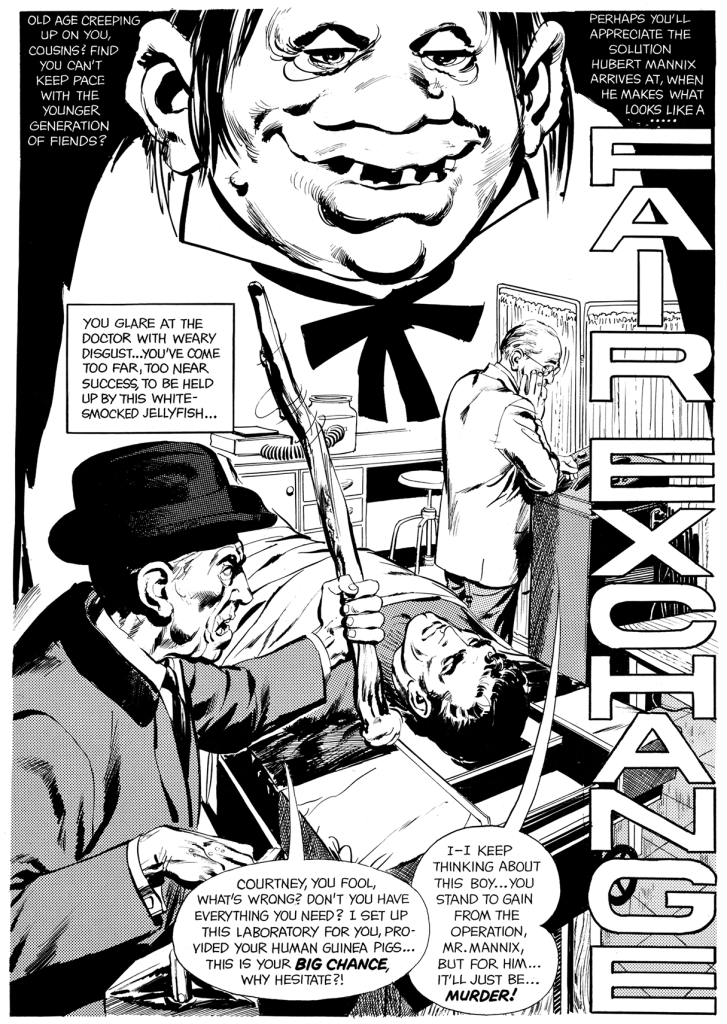
‘Fair Exchange’ (originally published in Eerie #9, cover-dated May 1967), by Archie Goodwin (script), Neal Adams (art), Charlotte Jetter (letters)
The splash page tells you all you need to know about the premise, with a rich bastard seeking to fight old age by bribing a conflicted doctor into carrying out a medical experiment that involves sacrificing a young man. The following pages then ensue with inevitability: we learn more about how we got here and we wait for the old man get his comeuppance. It’s all fairly clichéd, even if there is an extra layer of resonance once you consider that this jab against the hubris of ageing capitalists ruthlessly trampling over the youth was first published against the backdrop of the generation gap pitting baby boomers against their parents… That said, like with many of Archie Goodwin’s scripts for Eerie and Creepy, the point is to get you involved in a linear narrative and then surprise you with a shocking punchline that comes out of the left field, resulting in a brief moment of satisfaction – one that works to a greater or lesser degree depending on how invested you actually were in the story leading up to the twist. In ‘Fair Exchange,’ that story is illustrated by one of the masters of horror comics, Neal Adams, who throws himself at the material with genuine gusto, so the ironic ending earns, at the very least, a solid laugh!
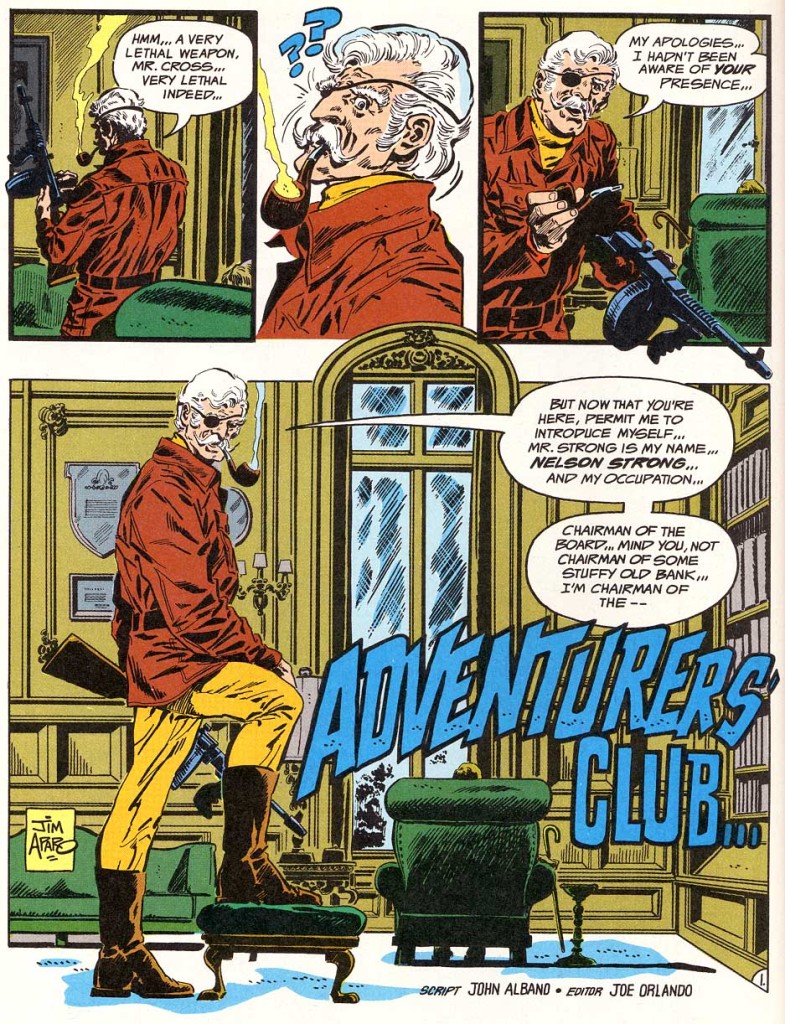
‘Adventurers’ Club’ (originally published in Adventure Comics #426, cover-dated February-March 1973), by John Albano (script) and Jim Aparo (art, letters)
Part ghost story, part hardboiled crime yarn, ‘Adventurers’ Club’ was the first of a recurring feature whose framing device consisted of people applying to the titular club by telling a tale that proved they’d been involved in ‘exciting and unusual adventures’ – in this case, the tale of a gangster seemingly haunted by a girl he killed in a drive-by shooting, which is mostly remarkable because of Jim Aparo’s dynamic art and hysterical lettering. It was a very short-lived feature (as far as I can tell, there was only one further installment, tantalizingly called ‘The Voodoo Lizards!’), but it showed editor Joe Orlando’s enduring trust that Aparo’s style was a perfect vehicle for a certain type of ‘heightened reality’ horror. Having already worked together in House of Mystery, a couple of years later the duo went on to explore Aparo’s horrific talent in another Adventure Comics feature, namely a memorably gruesome run starring the Spectre…
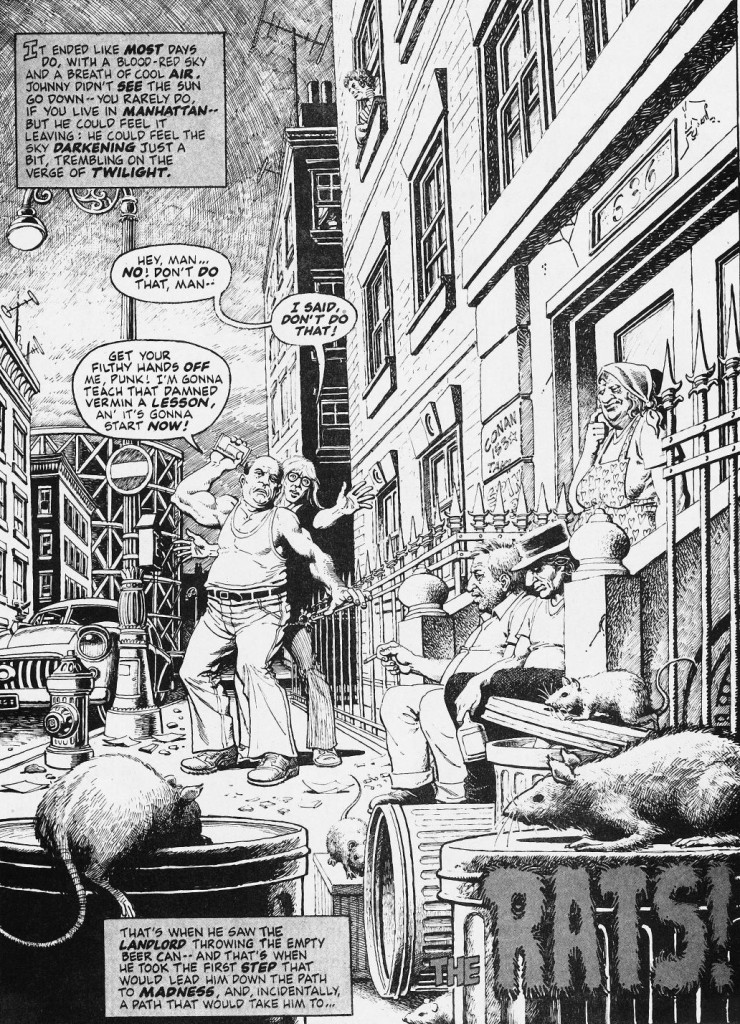
‘The Rats!’ (originally published in Haunt of Horror #1, cover-dated May 1974), by Gerry Conway (script), Ralph Reese (art)
A nasty, anti-hippie chiller about how the world is much harsher than what some people want to believe… Politics aside, I’d argue the main reason to track down ‘The Rats!’ is Ralph Reese’s beautifully naturalistic artwork – he’s like a skilled director, equally at ease with intimate domestic drama and with panic-inducing set pieces.
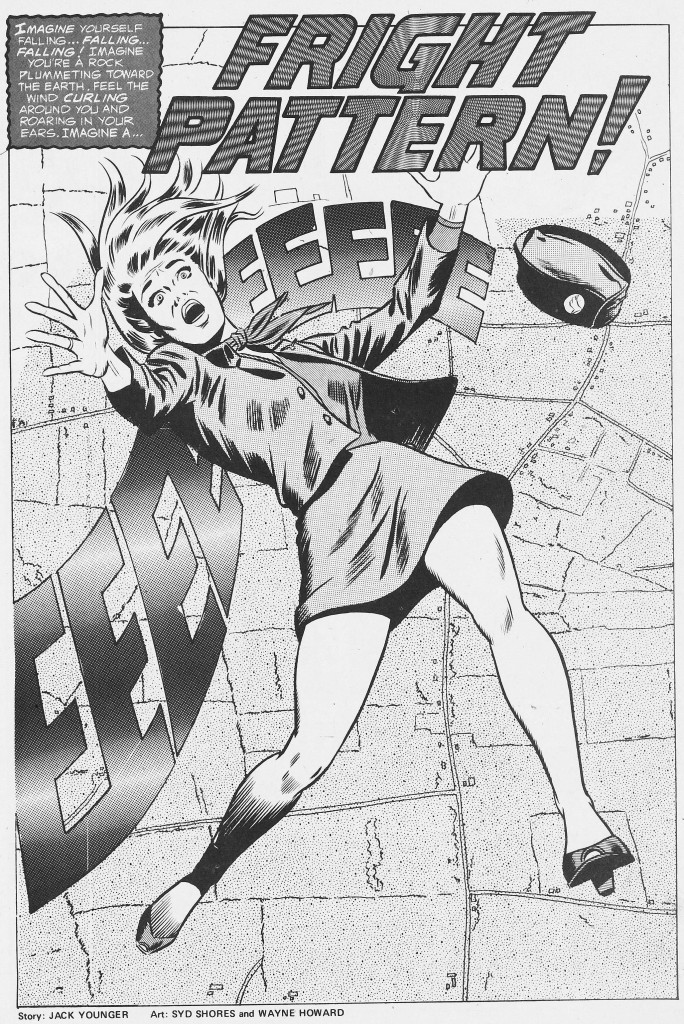
‘Fright Pattern!’ (originally published in Haunt of Horror #4, cover-dated November 1974), by Russ Jones [as Jack Younger] (script), Syd Shores (pencils), Wayne Howard (inks)
What a splash page, right? This comic about an air stewardess plagued by nightmares that she fears might be premonitory is essentially a pretext for the creators to indulge in a series of eerie hallucinations, which are ultimately the big selling point. The whole thing does end on a sort of poetic note, although it doesn’t feel entirely deserved, given the rushed characterization in the rest of the story.
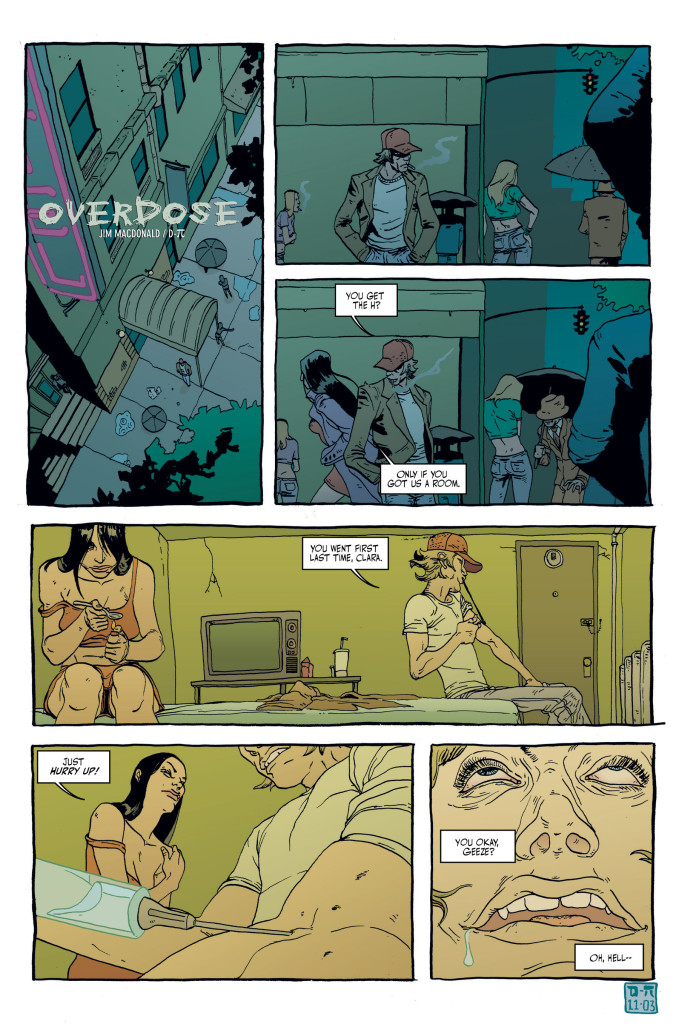
‘Overdose’ (originally published in Metal Hurlant #14, cover-dated November-December 2004), by Jim Macdonald (script) and D-PI (art)
The premise of a drug that induces out-of-body experiences is very cool, as it works visually and it prompts the narrative along. The pacing and artwork also breathe life into the Bonnie & Clyde-style protagonists, creating an effective emotional connection with their joy and frustrations, to the point where I wouldn’t mind spending more time with this couple and getting to know them better. It’s only the jarring, unsatisfying ending that lets ‘Overdose’ down – there is a punchline to this story somewhere, but I’m not sure this is it.
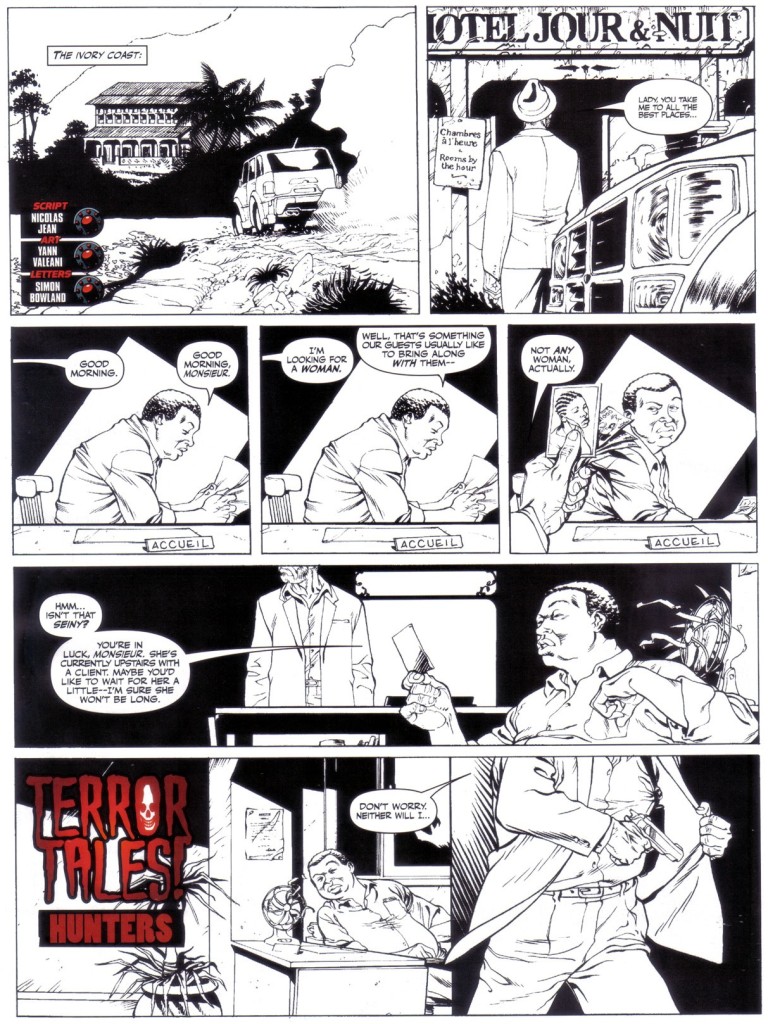
‘Hunters’ (originally published in 2000 AD #1608, cover-dated August 2008), by Nicolas Jean (script), Yann Valeani (art), and Simon Bowland (letters)
Some may feel that ‘Hunters’ tries to pack too much world-building into just five pages, but I think the convoluted backstory actually works to its advantage. In fact, I love the whole gung-ho, take-no-prisoners attitude, which makes for quite a charged reading experience: it’s as if we have just walked into the middle of a sleazy, violent thriller and jumped straight into the good bits.

